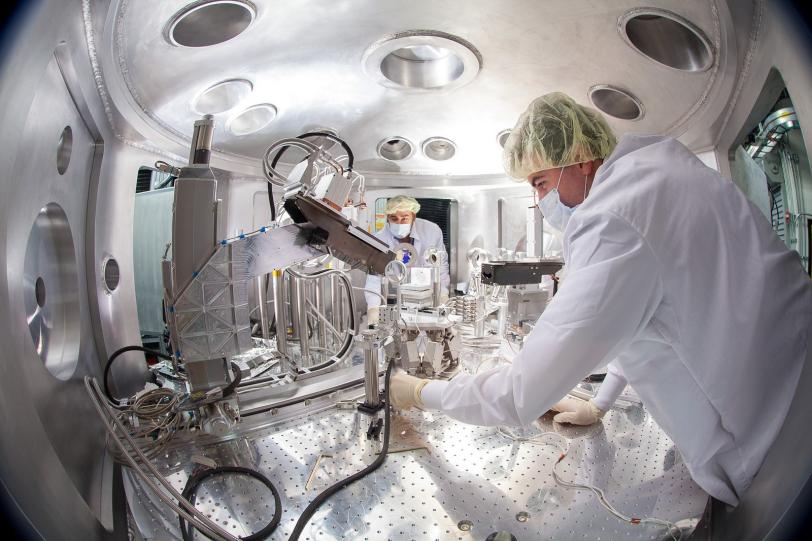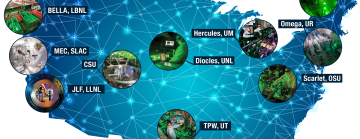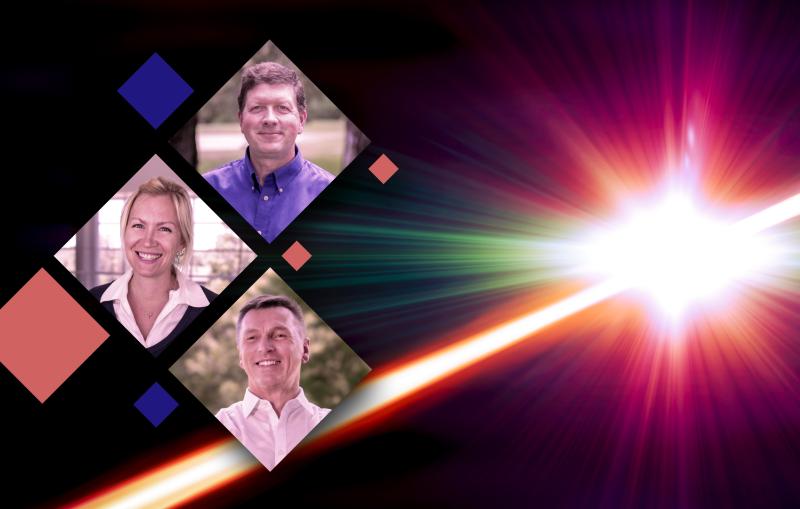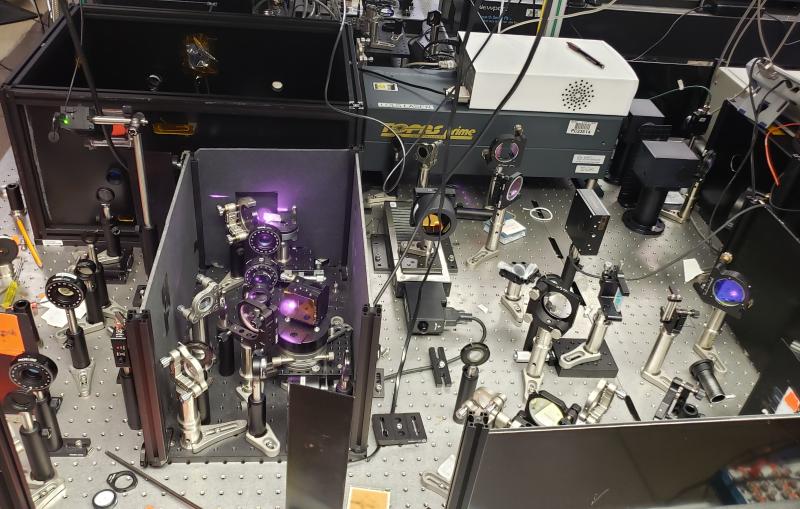The LaserNetUS high-power laser consortium, including SLAC, receives $18 million from the U.S. Department of Energy
The initiative will give scientists more access to powerful lasers at universities and labs.
In 2018, the U.S. Department of Energy (DOE) established a network of facilities operating ultra-powerful lasers, called LaserNetUS. Organized and funded through the department’s Office of Fusion Energy Sciences (FES), the new network was created to provide vastly improved access to unique lasers for researchers, and to help restore the U.S.'s once-dominant position in high-intensity laser research. This new funding ($18 million), distributed among 10 partner institutions and including $1 million for user support, will continue and expand LaserNetUS operations for three years.
“The LaserNetUS initiative is a shining example of a scientific community coming together to advance the frontiers of research, provide students and scientists with broad access to unique facilities and enabling technologies, and foster collaboration among researchers and networks from around the world,” said James Van Dam, DOE associate director of science for fusion energy sciences. “We are very excited to work with all of these outstanding institutions as partners in this initiative.”
The initiative includes the DOE’s SLAC National Accelerator Laboratory, home to the Matter in Extreme Conditions (MEC) instrument of the Linac Coherent Light Source (LCLS), a DOE Office of Science user facility. According to Gilliss Dyer, SLAC principal investigator and MEC department head, “The LaserNetUS initiative has invigorated collaboration and planning among the major laser facilities of the U.S. and opened up real opportunities for scientists who previously might not have had a clear path to accessing the powerful tools that these facilities provide. MEC was already part of an open-access user facility as an instrument of LCLS, but the separate peer review process of LaserNetUS is an avenue by which we can broaden our user base by bringing in optical-only experiments that could either stand alone or set the stage for new science on MEC with LCLS. Furthermore, our scientists and users are excited for this expanded opportunity to do science on the other great and diverse laser facilities in the network.”

LaserNetUS includes the most powerful lasers in the United States and Canada, some of which have powers approaching or exceeding a petawatt. Petawatt lasers generate light with at least a million billion watts of power, or nearly 100 times the combined output of all the world's power plants but compressed into the briefest of bursts. These lasers fire off ultrafast pulses of light shorter than a tenth of a trillionth of a second.
All facilities in LaserNetUS operate high-intensity lasers, which have a broad range of applications in basic research, advanced manufacturing and medicine. They can recreate some of the most extreme conditions in the universe, such as those found in supernova explosions and near black holes. They can generate particle beams for high energy physics research or intense X-ray pulses to probe matter as it evolves on ultrafast time scales. They are being used to develop new technology, such as techniques to generate intense neutron bursts to evaluate aging aircraft components or implement advanced laser-based welding. Several LaserNetUS facilities also operate high-energy longer-pulse lasers that can produce exotic and extreme states of matter like those in planetary interiors or highly compressed materials; they can also be used to study laser-plasma interaction, important to fusion energy programs.
In its first year of user operations, LaserNetUS awarded beamtime for 49 user experiments to researchers from 25 institutions. Over 200 user scientists, including well over 100 students and postdocs, have participated in experiments so far. The LaserNetUS institutions are: Colorado State University, Lawrence Berkeley National Laboratory, Lawrence Livermore National Laboratory, SLAC National Accelerator Laboratory, The Ohio State University, University of Michigan, University of Nebraska-Lincoln, Institut National de la Recherche Scientifique, University of Rochester and University of Texas at Austin. All proposals are peer reviewed by an independent external panel of national and international experts.
The U.S. has been a pioneer in high intensity laser technology, and was home to the research that was recognized by the 2018 Nobel Prize in Physics. The network and future upgrades to LaserNetUS facilities will provide new opportunities for U.S. and international scientists in discovery science and in the development of new technologies.
This article was adapted from an original press release prepared by the DOE.
Top image: Map showing the locations of the ten LaserNetUS facilities. (Jennifer Hamson/University of Rochester LLE)
Contact
For questions or comments, contact the SLAC Office of Communications at communications@slac.stanford.edu.
SLAC is a vibrant multiprogram laboratory that explores how the universe works at the biggest, smallest and fastest scales and invents powerful tools used by scientists around the globe. With research spanning particle physics, astrophysics and cosmology, materials, chemistry, bio- and energy sciences and scientific computing, we help solve real-world problems and advance the interests of the nation.
SLAC is operated by Stanford University for the U.S. Department of Energy’s Office of Science. The Office of Science is the single largest supporter of basic research in the physical sciences in the United States and is working to address some of the most pressing challenges of our time.






